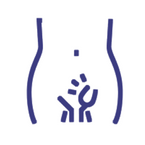top of page
"मानव सेवा परमो धर्म"
SERVICES
JeevanDeep has highly skilled and awarded doctors who are experts in their services and are globally recognized for their expertise.

Lipoma
A fatty lump most often situated between the skin and underlying muscle layer.
Lipomas are slow growing and usually harmless. Rarely, they can be cancerous. Some people have more than one.
Lipomas are just under the skin and move easily when pressure is applied. They commonly occur in the neck, shoulders, back, abdomen, arms and thighs.
Treatment generally isn't necessary, but if the lipoma is bothersome, painful or growing, surgical removal may be required.
Lipomas are slow growing and usually harmless. Rarely, they can be cancerous. Some people have more than one.
Lipomas are just under the skin and move easily when pressure is applied. They commonly occur in the neck, shoulders, back, abdomen, arms and thighs.
Treatment generally isn't necessary, but if the lipoma is bothersome, painful or growing, surgical removal may be required.

Hydrocele
A fluid-filled sac around a testicle, often first noticed as swelling of the scrotum.
Hydrocele is common in newborns and usually disappears without treatment within the first year. Older men can develop hydroceles, sometimes due to inflammation or injury.
Hydroceles are usually painless, but may become large and inconvenient. An ultrasound may be required to diagnose the condition.
Treatment usually involves watchful waiting. In rare circumstances, surgery is required.
Hydrocele is common in newborns and usually disappears without treatment within the first year. Older men can develop hydroceles, sometimes due to inflammation or injury.
Hydroceles are usually painless, but may become large and inconvenient. An ultrasound may be required to diagnose the condition.
Treatment usually involves watchful waiting. In rare circumstances, surgery is required.

Gangalion
A non-cancerous lump, often on the tendons or joints of wrists and hands.
The cause of ganglion cysts is unknown.
A ganglion cyst is round, small and usually painless. Although rare, it can be painful if it presses a nerve. In a few cases, the cyst can interfere with joint movement.
A ganglion cyst often clears on its own. If troublesome, it can be drained or removed.
The cause of ganglion cysts is unknown.
A ganglion cyst is round, small and usually painless. Although rare, it can be painful if it presses a nerve. In a few cases, the cyst can interfere with joint movement.
A ganglion cyst often clears on its own. If troublesome, it can be drained or removed.

Gynecology
Gynaecology or gynecology is the area of medicine that involves the treatment of women's diseases, especially those of the reproductive organs. It is often paired with the field of obstetrics, forming the combined area of obstetrics and gynecology. The term comes from Greek and means "the science of women".

Hernia
A bulging of an organ or tissue through an abnormal opening.
Typically, a hernia involves the stomach or intestine.
Symptoms include a bulge, swelling or pain. In some cases, there are no symptoms.
Treatment includes monitoring the condition. If required, surgery can return tissue to its normal location and close the opening.
Typically, a hernia involves the stomach or intestine.
Symptoms include a bulge, swelling or pain. In some cases, there are no symptoms.
Treatment includes monitoring the condition. If required, surgery can return tissue to its normal location and close the opening.

Appendics
A condition in which the appendix becomes inflamed and filled with pus, causing pain.
The appendix is a pouch-like structure attached at the start of the large intestine that has no known purpose.
Appendicitis begins with fever and pain near the belly button and then moves toward the lower-right side of the abdomen. This is often accompanied by nausea, vomiting, loss of appetite, fever and chills.
Appendicitis is usually treated with antibiotics and surgery is required within 24 hours of its diagnosis. If untreated, the appendix can rupture and cause an abscess or systemic infection (sepsis).
The appendix is a pouch-like structure attached at the start of the large intestine that has no known purpose.
Appendicitis begins with fever and pain near the belly button and then moves toward the lower-right side of the abdomen. This is often accompanied by nausea, vomiting, loss of appetite, fever and chills.
Appendicitis is usually treated with antibiotics and surgery is required within 24 hours of its diagnosis. If untreated, the appendix can rupture and cause an abscess or systemic infection (sepsis).
bottom of page
